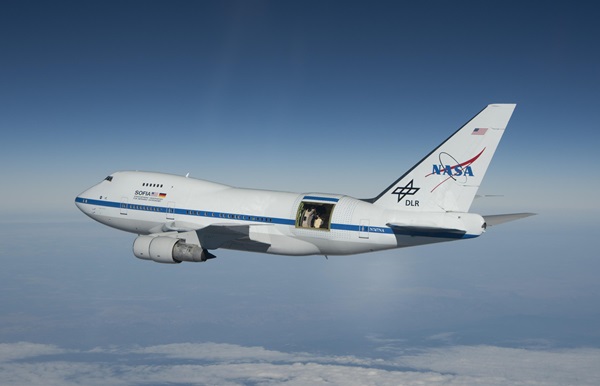Key Takeaways:
On behalf of NASA, the Universities Space Research Association, Columbia, Maryland, selected three astronomers to participate the Stratospheric Observatory For Infrared Astronomy (SOFIA). SOFIA is a highly modified Boeing 747SP aircraft that carries a 98-inch (2.5-meter) diameter airborne infrared telescope.
Naming researchers from the astronomy community is a milestone on SOFIA’s journey to become the most versatile airborne telescope in the world. The flying observatory will begin its short science, or “first light” observations, in early summer 2009, and will continue its program of celestial observations for the next 20 years.
“We are extremely pleased at the level of enthusiasm and the number and scope of the applications we received for the SOFIA short science program,” said Eric Becklin, SOFIA chief scientific advisor. “The proposals we received set a high standard for future observation projects onboard SOFIA.”
David Neufeld of Johns Hopkins University, Baltimore, will study the chemistry of warm interstellar gas using data the German Receiver for Astronomy at Terahertz Frequencies (GREAT) obtains. This instrument is a spectrometer developed specifically for the SOFIA program by a consortium of German research institutes, led by Rolf Guesten at the Max Planck Institute for Radioastronomy in Bonn, Germany. Neufeld will use data from GREAT to probe the chemistry of the warm gas by observing emissions from molecules, such as carbon monoxide (CO). The study will help researchers understand the nature of chemical reactions taking place in the warm gas that is found around forming stars as well as other regions in the interstellar medium.
The other two researchers selected to participate in the “first light” flights, Mark Morris of the University of California at Los Angeles, and Paul Harvey of the University of Colorado, Boulder, will join the team using the Faint Object InfraRed Camera for the SOFIA Telescope (FORCAST), a mid-spectrum infrared camera developed by Terry Herter of Cornell University, Ithaca, New York.
Morris will collaborate with the FORCAST team to study the Milky Way’s center, a dynamic region of extreme gas densities and high-energy content. In the central region, which spans a distance of 1,000 light-years, the high concentration of molecular gas results in a high rate of massive star formation. Scientists will use the FORCAST instrument to develop the clearest view of the hot dust in the region. Harvey will work with the FORCAST team to interpret observations of bright star-forming regions to determine SOFIA’s current and future imaging capabilities.
SOFIA observes radiation generated by cosmic objects across the widest wavelength range of any observatory, from 0.3 microns to 1.0 millimeters, spanning the visible, infrared, and sub-millimeter portions of the electromagnetic spectrum. Missions typically will last between 10 and 12 hours, and the aircraft flies from 7.5 to 8.5 miles (12 to 14 km) above Earth. Flying at these altitudes puts SOFIA’s infrared telescope above 99.8 percent of the water vapor in Earth’s atmosphere. This enables a greater range of observations in the infrared spectrum.
Following the first light observations, SOFIA will begin its “basic science” program in late 2009 with approximately 15 flights. Proposals for the basic science flights will be solicited in December 2008.










